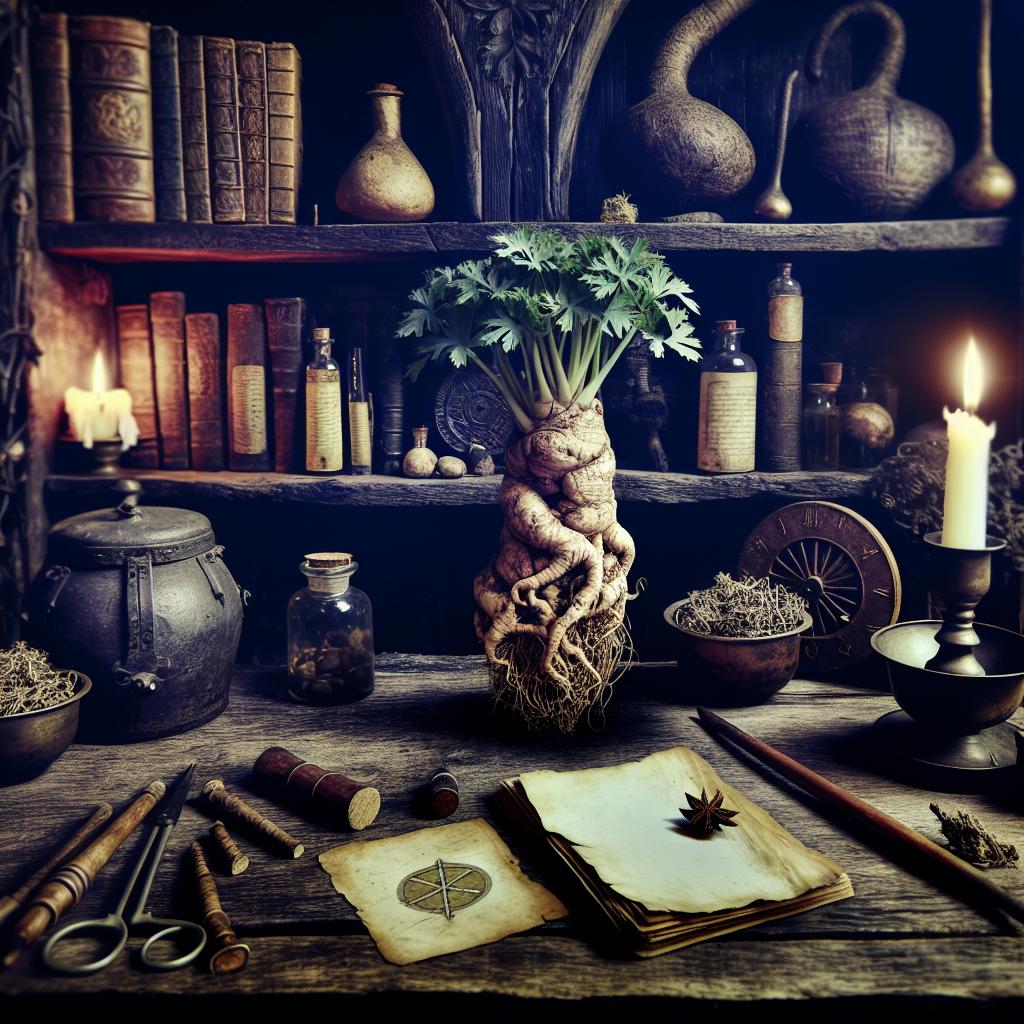Content:
Introduction to Mandrake
The mandrake plant, a member of the nightshade family, has captivated human imagination for centuries. Historically revered and feared, this plant has woven its way through myths, magic, and medicine. Mandrake’s root resembles the human form, which may be the origin of its mystical reputation.
Ancient Myths and Beliefs
The mandrake holds a rich presence in mythological tales. Its roots have been associated with numerous legends, particularly in ancient Europe and the Middle East. People often believed the plant screamed when uprooted, causing madness or death to those who heard it. As a result, various methods were devised to harvest the root. Some myths suggest tying the plant to an animal, often a dog, to pull it out, sparing human ears from its deadly cry.
The notion of the mandrake’s scream illustrates the combination of fear and reverence that surrounded this plant. The fear associated with its scream represents the broader awe of nature’s mysteries, while the human-like shape of the root suggests a connection to mystical forces, perceived as the earth’s embodiment of life and spirit.
The Role in Magic
Mandrake’s mystical allure extends into magic and alchemy. In the Middle Ages, sorcerers and alchemists prized the plant for its supposed ability to enhance fertility, wealth, and even invisibility. The root’s human shape lent itself to use as a talisman or charm in magical rituals. In ritualistic contexts, mandrake was considered potent in love potions and protective spells.
The plant’s properties were integrated into various forms of magical practice, often with an understanding of herbalism mingled with mystical beliefs. In many cultures, mandrake was thought to ward off evil spirits, providing protection to those who possessed it. It also symbolized fertility, likely due to its humanoid resemblance, playing a significant role in rituals intending to increase procreation and vitality.
Medicinal Uses Through History
Despite its reputation for magic, mandrake has a long history in medicine. Ancient Greek physicians, like Dioscorides and Galen, documented its use as an anesthetic and sedative. During surgical procedures, the roots were processed into a concoction to numb pain and induce deep sleep. Mandrake’s medicinal qualities stem from alkaloids such as hyoscyamine and scopolamine, which can have powerful effects on the human nervous system.
Throughout history, the understanding and applications of mandrake in medicine have evolved. In ancient times, its use as an anesthetic marked a significant development in attempts to manage pain and conduct more complex surgical procedures. The roots were often made into a wine or a mixture that would be ingested to produce a calming effect, demonstrating an early exploration of pharmacology.
During the Renaissance, alongside the burgeoning fields of natural science and alchemy, practitioners began to document mandrake’s medicinal properties with increasing detail. Its sedative qualities were recognized and further explored, although always approached with caution due to its high toxicity levels.
Modern Understanding and Safety
With advancements in medicine, the use of mandrake has largely diminished. Modern pharmacology recognizes the toxic potential of its alkaloids, which can cause potentially dangerous effects if consumed. While it contributes to historical medical knowledge, its importance in contemporary practices is limited.
Today, mandrake serves more as a botanical curiosity and a topic of historical interest rather than a component of modern therapeutics. Its active constituents, while toxic, have aided in the broader understanding of certain chemical compounds that influence the nervous system and have informed the development of safer, more effective pharmaceuticals.
In modern herbalism, mandrake is seldom used due to the risks associated with its consumption. Its story is told more often in courses on ethnobotany and historical medicine, highlighting how ancestral societies utilized their natural environments in ways that combine observation, experimentation, and lore.
For more scientific information on the plant and its uses, you can refer to academic journals and studies that investigate its chemical properties and historical impact. It’s essential to approach mandrake with caution and respect, given its toxic nature and historical significance.
In understanding mandrake, we uncover a fascinating intersection of myth, magic, and medicine that spans human history, blending cultural stories with botanical and medicinal exploration. The plant’s journey from a feared element of folklore to a subject of scientific scrutiny exemplifies the evolution of human knowledge. From ancient rituals to modern safety standards, mandrake symbolizes the deep and often complex relationship between humans and the natural world.
As we continue to examine plants like mandrake within the context of their historical and cultural significance, we enrich our perspective and respect for the intricate tapestry of human history, where natural phenomena often inspire tales that transcend purely botanical definitions. Through such studies, we acknowledge not only the mystique of the past but also the rational curiosity that drives modern scientific inquiry.
